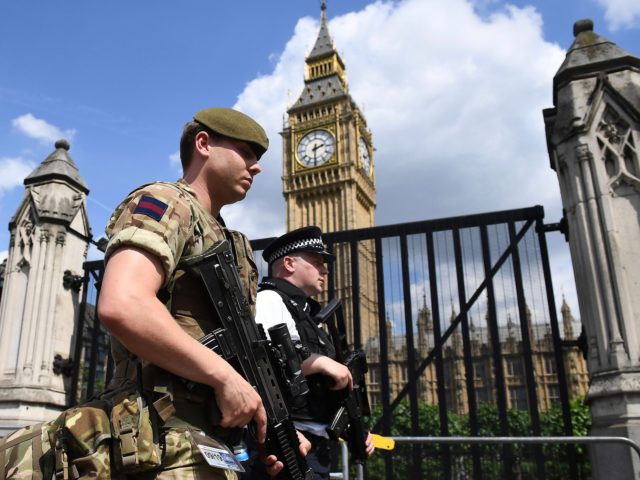The British government’s anti-radicalisation programme is only monitoring two per cent of all suspected terrorists flagged with the security services, Home Office data has revealed.
In 2019, 6,287 people were listed on the rolls of the Prevent programme, which seeks to deradicalise primarily young people who are at risk of becoming terrorists or supporting terrorism.
It has now been revealed that only 147 of those flagged last year remain under the scrutiny of the programme, representing just two per cent of all terrorists flagged for Prevent, The Sun reported on Saturday.
The former boss of the National Counter Terrorism Security Office Chris Phillips told the paper: “Covid lockdowns have made the work of police and security services much-more difficult — try following a suspect on empty streets.”
“In addition, many will be using the internet to radicalise others,” Phillips said, going on to warn: “We are in for a difficult time ahead with a high likelihood of further attacks.”
The Prevent programme was responsible for tracking the London Bridge terrorist, Usman Khan, 28, who stabbed two Cambridge University graduates during a prisoner rehabilitation event at Fishmongers’ Hall in 2019.
An inquest later revealed that the Prevent officers responsible for Khan had “no specific training” in dealing with terrorists.
More recently, the suspect in the fatal shooting of a police officer in London in September had been flagged by the programme prior to the attack.
Islamist Terrorists Fooling Authorities into Thinking They’re Reformed: Report https://t.co/lSZ2Gy9i2q
— Breitbart London (@BreitbartLondon) July 24, 2020
Security analyst Will Geddes, who serves as the managing director of the ICP Group, said that a resurgence of terror attacks will likely occur after lockdown restrictions are eased in Europe.
“One of the biggest issues we have to remember is that terrorism is not very successful if there are empty streets, where there are less potential victims and it is easier for security services to identify them,” Geddes said.
“Terrorists like to target highly populated areas, which there are less of when people are not on the streets as much,” he explained.
“Nothing can be discounted right now, the hardest part for counter-terrorism is trying to look at what opportunities these groups will try to exploit,” Geddes warned.
In November, Home Secretary Priti Patel confirmed that the Joint Terrorism Analysis Centre (Jtac), an independent branch of the MI5 security service, upgraded the UK terror threat level, meaning that the government considers an attack “highly likely“.
The upgrade from “likely”, which remains in place, followed a string of terror attacks in Vienna, Austria, and France.
“This is a precautionary measure and is not based on any specific threat. The public should continue to remain vigilant and report any suspicious activity to the police,” Ms Patel said at the time.
In April, the government revealed that security services were aware of at least 43,000 terrorist suspects in the country, almost double the amount previously disclosed to the public.
2020: The Year Radical Islamic Terror Resurged, Despite Pandemic and Lockdowns https://t.co/9elL6acDuE
— Breitbart London (@BreitbartLondon) December 30, 2020
Follow Kurt Zindulka on Twitter here: @KurtZindulka

COMMENTS
Please let us know if you're having issues with commenting.